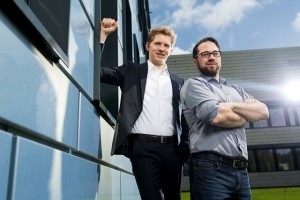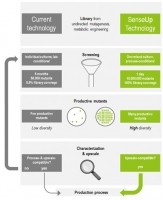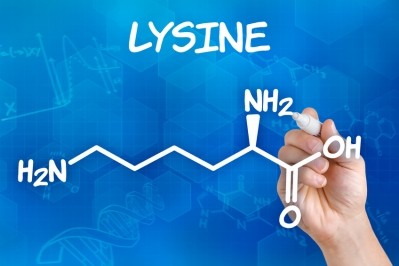What do German efficiency and lysine producing bacteria have in common?

We caught up with Dr Stephan Binder, one of the co-founders of the Jülich based business, SenseUp, to hear more.
Finding the optimal producer in billions of non-producing cells is the major challenge in strain development.
The SenseUp team said their tools transform the specific productivity of a single cell into a fluorescence signal, enabling fast screening of large microbial cell libraries under process conditions.
This corresponds to million-fold acceleration of the screening process and generates significant advantages compared to conventional techniques, said the German biotech experts.
FeedNavigator: In a nutshell, what does Sense-Up do?
Stephan Binder: We have already developed the first building blocks for a high-throughput technology that enables us to screen billions of bacterial cells within hours to find those ones that produce desired products such as amino acids.
Until now, this kind of screening was problematic, because capacities were limited. For example, large companies are able to screen up to 50,000 cells in one year. We analyze 50,000 cells in one second.
This is the core element of our business model, our unique selling point (USP), the factor which differentiates us from the competition.
SenseUp is part of a new economy, the bio-economy. In the very near future, it will be important to change from fossil dependent industrial processes to ones based on eco-friendly renewable resources.
But we need cost effective production processes which can compete or be even more effective than the traditional ones. Therefore, we need very efficient microbial strains, which convert glucose into the end-product. The goal of SenseUp is to develop exactly those strains.
FeedNavigator: What level of funding has been required to launch the business and how will you keep it going?
Stephan Binder: Since 2014, we have been funded by the [German] Federal Ministry of Education and Research (BMBF) as a research group based at the Forschungszentrum [research center] Jülich. We are part of the GO-Bio project and, [under the auspices of that initiative], we raised about €2.6m to finance a team of eight highly skilled and motivated scientists and technicians.
At the end of the 2015, we founded the company, SenseUp GmbH, and, in 2017, we plan to move out of the Forschungszentrum. Off course, this will involve quite an outlay. We have to buy all the equipment required to run a microbiology laboratory and, therefore, we are actively searching for investors.
The company will continue to be funded by the BMBF until 2017. But it is very important to become independent from governmental funding as fast as possible. In four to five years we plan to break-even. This should be the first, major goal of every entrepreneur.
FeedNavigator: What are the implications of your strain selection capacity for the feed manufacturing industry?
Stephan Binder: Our initial focus is on the production of amino acids, which are used in food, feed and pharmaceuticals.
For feed, amino acids are very important because they quickly become limiting in animal diets - L-methionine, L-lysine, and L-threonine are the most important ones.
The effective supplementation of feed with amino acids can result in the resourceful use of farmland - 1kg of L-lysine can replace the use of 3,3kg of soybean meal. Now let´s think bigger. The worldwide use of more than 900,000 metric tons of methionine can save some 20 million hectares of crop land, which is the size of Belarus or Senegal.
FeedNavigator: You co-founded SenseUp with Georg Schaumann, who wears the CEO hat?
Stephan Binder: Georg is responsible for all actions taking place ‘externally’. He looks after customers, partners, legal issues, and networking. A big company would call him the CEO.
My job is to develop efficient procedures. Therefore, I have more contact with the team, and, together with our scientists, I am responsible for designing the right experiments, identifying problems and solving them.
What are the five-year goals of SenseUp?
Stephan Binder: Year 1: After finishing the GO-Bio I project we [anticipate] raising additional funds, which enables us to move into our own labs and start the commercial phase of the business.
Year 2-3: [We would expect our] first microbial strains to be finally developed and used for the large-scale production of certain amino acids.
Year 4-5: Break-even; diversification and expansion of our platform technology to develop products beyond amino acids.
















